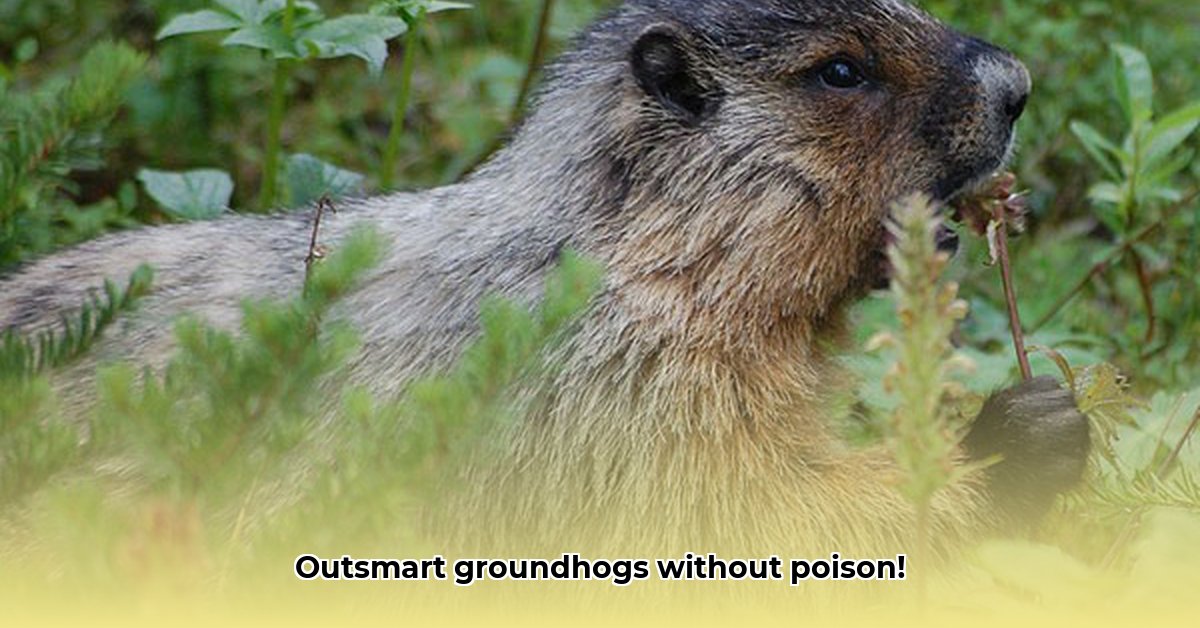
Dealing with groundhogs damaging crops is frustrating, leading many to consider rodenticides readily available at Tractor Supply. However, using poison presents significant environmental and ethical concerns, prompting a need for sustainable alternatives. For other Tractor Supply products, check out their website. This article explores humane and effective methods for groundhog control in sustainable agriculture.
The Environmental and Ethical Implications of Using Rodenticides
Rodenticides, while effective in killing groundhogs, pose significant risks to the ecosystem. Non-target species, such as birds of prey consuming poisoned groundhogs, suffer secondary poisoning. Soil and water contamination from these toxins can have long-term detrimental effects on biodiversity and potentially human health. Moreover, the indiscriminate killing of groundhogs raises ethical questions regarding animal welfare. The cumulative impact of rodenticides on the environment is a growing area of concern, with ongoing research highlighting unforeseen consequences. Do we truly need to resort to such drastic measures when sustainable alternatives exist?
Sustainable and Humane Groundhog Management Strategies
Fortunately, numerous sustainable and humane methods effectively manage groundhog populations without resorting to harmful chemicals.
1. Physical Barriers: Exclusion and Deterrence
- Fencing: Constructing sturdy fences, buried several inches underground, prevents groundhog access to crops. Use strong mesh wire to deter digging.
- Exclusion Devices: Employ wire mesh or hardware cloth to block access to burrows or vulnerable areas under sheds or buildings. These are particularly effective in protecting specific high-value plants.
2. Repellents: Natural and Commercial Options
- Natural Repellents: Castor bean oil, peppermint oil, and other natural repellents deter groundhogs through unpleasant smells or tastes. However, consistent application is vital, and effectiveness can vary.
- Commercial Repellents: Various commercially available repellents, often found at Tractor Supply, offer differing levels of effectiveness and longevity. Thorough research and comparison of products are crucial to maximize impact.
3. Habitat Modification: Reducing Groundhog Attractiveness
- Remove Temptations: Eliminate readily available food sources and shelter. Properly store garbage, maintain short grass near structures, and remove dense vegetation providing groundhog shelter. This actively reduces the appeal of your property as a suitable habitat.
- Water Management: Restricting access to water sources can discourage groundhog presence, particularly during dry periods. This method complements other strategies.
4. Trapping and Relocation: Humane Removal
- Ethical Considerations: Trapping and relocating groundhogs to a suitable, distant habitat can be humane, but it's crucial to abide by local regulations and ensure the new location is appropriate.
- Practical Considerations: Successful relocation necessitates transporting groundhogs far enough to prevent their return. The stress of relocation can impact the animals' survival, and success isn't guaranteed.
5. Encouraging Natural Predators: A Long-Term Biological Control
- Habitat Enhancement: Create habitats attractive to natural predators like owls or foxes, which can help control groundhog populations. This is a long-term strategy requiring a deep understanding of local ecology.
Case Study: A Farmer's Success with Sustainable Methods
A farmer in Vermont switched from rodenticides to a combination of fencing and natural repellents, significantly reducing crop losses and improving environmental sustainability. His experience demonstrates the effectiveness and feasibility of sustainable practices.
Actionable Steps: A Practical Guide to Groundhog Control
- Assess your farm: Identify areas most vulnerable to groundhog damage and the extent of the problem.
- Choose appropriate methods: Select sustainable strategies based on your farm's specifics, considering cost and effort needed.
- Implement consistently: Regular maintenance is critical for all selected methods; consistent implementation is key to success. Fence repairs, repellent reapplication, and trap monitoring are ongoing tasks.
- Monitor and adapt: Track your success and make any needed adjustments to your strategy.
Choosing sustainable alternatives to groundhog poison from Tractor Supply requires effort but yields substantial long-term benefits. A healthier environment, improved animal welfare, and reduced long-term costs are all achievable through sustainable and humane pest management. Remember there are always ongoing developments in sustainable groundhog control, so stay informed!